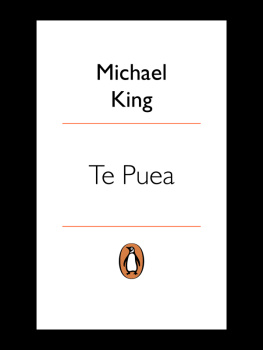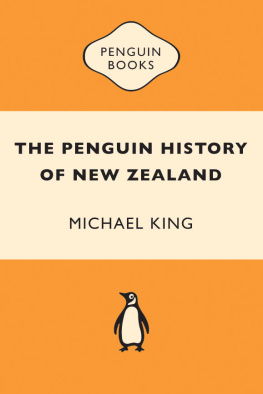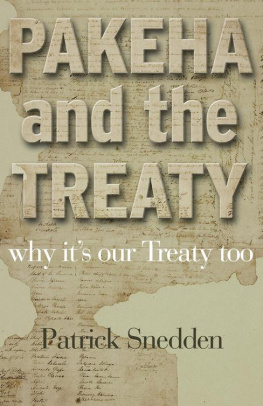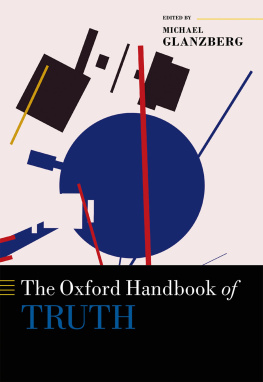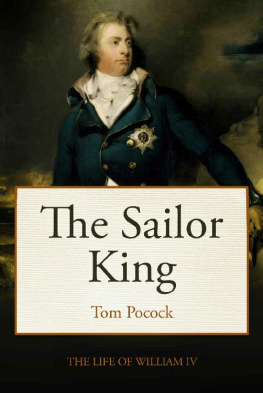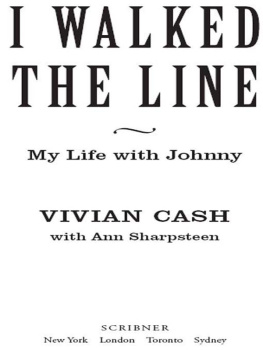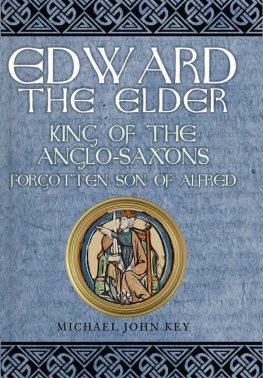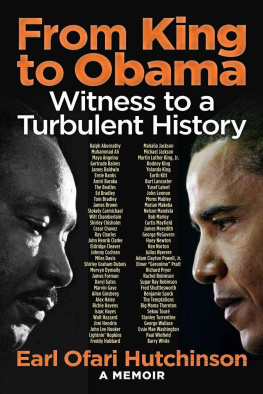A RAUPO BOOK
UK | USA | Canada | Ireland | Australia
India | New Zealand | South Africa | China
Penguin is an imprint of the Penguin Random House group of companies, whose addresses can be found at global.penguinrandomhouse.com.
First published by Hodder & Stoughton 1977, reprinted 1978 (twice)
Second edition published 1982, reprinted 1984
Third edition published by Sceptre 1987, reprinted 1990, 1993
Fourth edition published by Reed Publishing (NZ) Ltd 2003
Reprinted 2004, 2005 (twice), 2006
This edition reprinted 2006 (twice), 2007
First published by Penguin Group (NZ) 2008
Copyright Michael King 2003
The right of Michael King to be identified as the author of this work in terms of section 96 of the Copyright Act 1994 is hereby asserted.
Text designed by Graeme Leather
Cover designed by Craig Violich
Cover photo by Te Uira Manihera
All rights reserved.
www.penguin.co.nz
ISBN: 978-1-74-253968-3
THE BEGINNING
Let the conversation begin
Like Penguin Random House NZ facebook.com/PenguinNZ and facebook.com/PenguinKidsNZ
Follow Penguin Random House NZ twitter.com/PenguinNZ and instagram.com/PenguinNZ
Find out more about the author and discover more stories at www.penguin.co.nz
For Irihapeti Merenia Ramsden
When my life is written I want the truth told and nothing but the truth
Te Puea Herangi
The animus in its most developed form sometimes connects the womans mind with the spiritual evolution of her age, and can thereby make her even more receptive than a man to new creative ideas. It is for this reason that women were used by many nations as diviners and seers. The creative boldness of their positive animus at times expresses thoughts and ideas that stimulate men to new enterprises.
M.L Franz
Preface
The writing of this, my first major book and first biography, came about by virtue of a series of coincidences.
In 1965, when I was a university student, I read The Maori and New Zealand Politics edited by John Pocock, then professor of political science at Canterbury University. His introduction identified Te Puea Herangi as possibly the most influential woman in our political history and lamented the absence of a full study of that remarkable woman. I attempted further research on Te Pueas life and public career but could find nothing about her in existing literature neither the full study proposed by Pocock nor, even, a short one. What, I wondered, was the justification for Pococks assessment of her?
Three years later I found myself in Hamilton working as Maori roundsman for the Waikato Times, my first post-university job. Now I was hearing stories about Te Puea on a weekly basis as I attended hui, poukai and tangihanga throughout the Tainui rohe. She had at this time been dead for only sixteen years. Her presence and influence were strong in the memories of those who had known her. Accounts of things she did and what she said were related frequently by kuia and kaumatua in justification of previous or current Tainui policies. Again I had cause to share Pococks regret about the absence of a full study of the woman to help me place these stories in context and more fully understand the significance of this unusually active and interesting life.
It dawned on me slowly that I might be in a position to write such a study. Over four years I came to know well Te Pueas surviving associates and protgs: Tumokai Katipa, her husband, a man of immense generosity and moral authority; Ngeungeu Zister, who had grown up with her at Mercer and would eventually outlive her by more than thirty years (dying at the age of 103); Piri Poutapu, one of the first of her children at Mangatawhiri; the Jones brothers, Mick and Pei Te Hurinui, who had worked with and for her over three decades; Heeni Wharemaru and Te Uira Manihera, gathered into her orbit in the 1930s and with her till the end of her life; Tumate and Robert Mahuta, members of her extended family.
Once I had established in the early 1970s that Pei Te Hurinui Jones did not plan to write a biography of Te Puea he produced several major books on Tainui history and considered himself the scribe of the tribe I set about seeking the authority and resources to write such a book myself. After several years of unsuccessful applications (I was, after all, an author with no track record), I was eventually awarded modest grants from the New Zealand Literary Fund and the Arts Council. With this backing, I approached Dame Te Atairangikaahu and members of the kahui ariki for formal permission to work in partnership with Tainui on researching and writing a life of Te Puea. I was given that permission.
This, the resulting study, is one in biography, not hagiography. In it, Te Pueas actions discredit her only to the extent that it is discreditable to be human. The principle I have adopted is that attributed to Voltaire: that to the living one owes respect, but to the dead one owes the truth. I was mindful of the comment Te Puea herself made to Eric Ramsden when he proposed writing such a book: When my life is written I want the truth told and nothing but the truth
There was a degree of anxiety in Waikato that some of the events with which Te Puea was associated, particularly those involving spiritual or apparently psychic phenomena, would not be believed by Europeans and would undercut whatever reputation she had accumulated for more conventional accomplishments. This had led to a reluctance to talk about her and a discouragement of the ambitions of earlier would-be biographers.
There was a further reason for delay: many of the people who knew Te Puea well were either illiterate, or simply more comfortable with oral than with written communication. This meant that a book about her had to incorporate a large quantity of oral research, especially interviewing surviving family and associates at considerable length.
One of the problems about this kind of research is that it cannot be done precipitately or coldly. It can only arise out of a relationship of ease and trust. Further, the resulting narrative can unintentionally take on the character of a series of loosely strung homilies; because it is the homily kind of story the anecdotes that preserve maxims and morals that flourish most readily in an oral climate, nurtured by frequent oratory and pointed story-telling that seek to reinforce the myths and values of a culture rather than to recount what actually happened.
Unaided memory can also prove to be fallible. Recollection may distort history because people forget things and are unwilling to admit it; or because they may be inclined to remember events as they would have liked them to have taken place for the sake of tidiness, or so that posterity might view them in a favourable light.
On the other hand it should be stressed that the purely documentary approach to history is hazardous too. European newspaper and parliamentary reports of encounters with Maori groups were frequently compiled by people who neither spoke Maori nor identified what was important about proceedings from a Maori point of view. This led to the accumulation of what Maharaia Winiata called Pakeha-coloured history.

